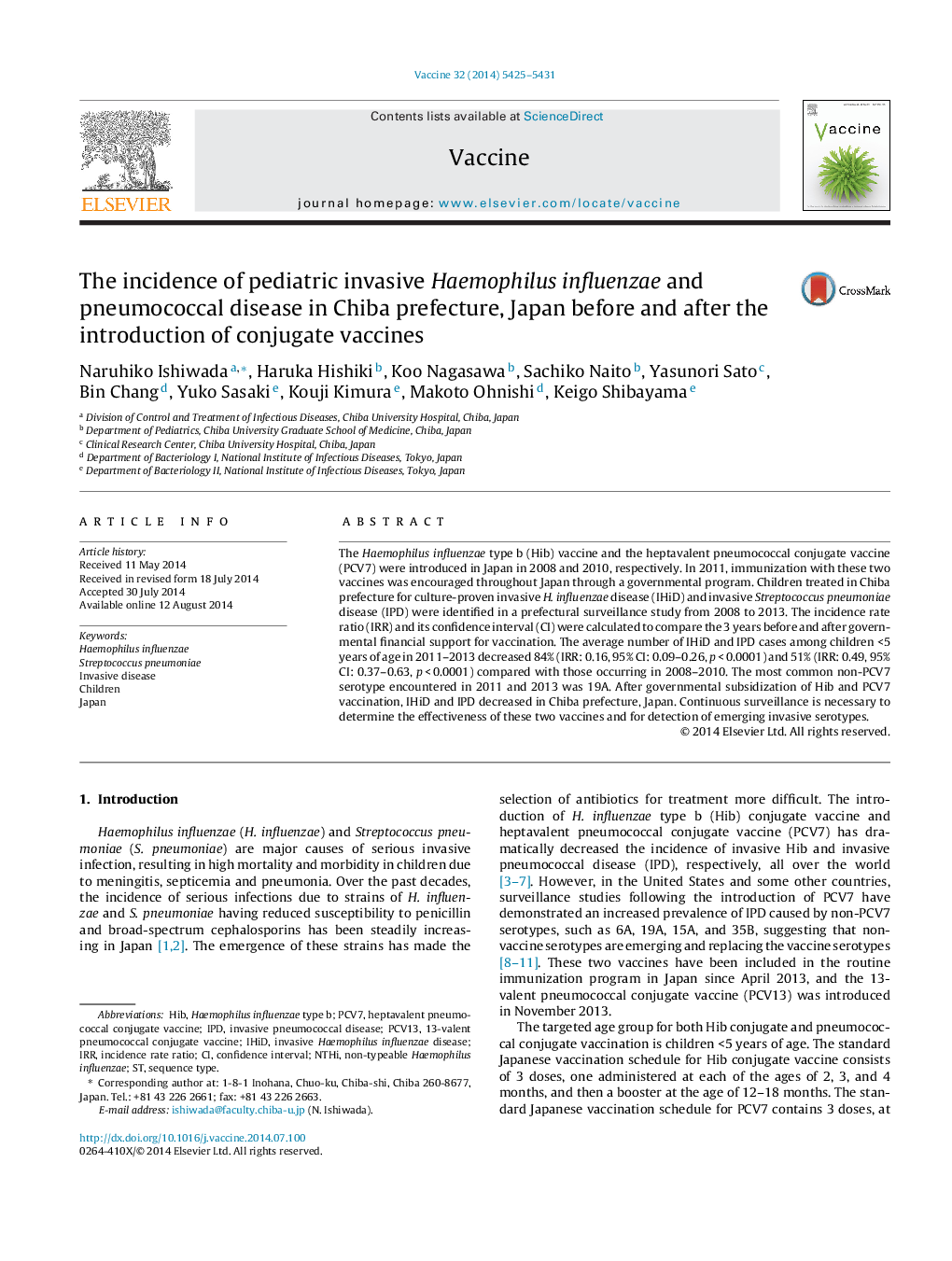| Article ID | Journal | Published Year | Pages | File Type |
|---|---|---|---|---|
| 10964550 | Vaccine | 2014 | 7 Pages |
Abstract
The Haemophilus influenzae type b (Hib) vaccine and the heptavalent pneumococcal conjugate vaccine (PCV7) were introduced in Japan in 2008 and 2010, respectively. In 2011, immunization with these two vaccines was encouraged throughout Japan through a governmental program. Children treated in Chiba prefecture for culture-proven invasive H. influenzae disease (IHiD) and invasive Streptococcus pneumoniae disease (IPD) were identified in a prefectural surveillance study from 2008 to 2013. The incidence rate ratio (IRR) and its confidence interval (CI) were calculated to compare the 3 years before and after governmental financial support for vaccination. The average number of IHiD and IPD cases among children <5 years of age in 2011-2013 decreased 84% (IRR: 0.16, 95% CI: 0.09-0.26, p < 0.0001) and 51% (IRR: 0.49, 95% CI: 0.37-0.63, p < 0.0001) compared with those occurring in 2008-2010. The most common non-PCV7 serotype encountered in 2011 and 2013 was 19A. After governmental subsidization of Hib and PCV7 vaccination, IHiD and IPD decreased in Chiba prefecture, Japan. Continuous surveillance is necessary to determine the effectiveness of these two vaccines and for detection of emerging invasive serotypes.
Keywords
IRRIPDPCV7NTHiPCV13Non-typeable Haemophilus influenzaeStreptococcus pneumoniaeinvasive diseaseInvasive pneumococcal diseaseconfidence intervalincidence rate ratioHaemophilus influenzae type bSequence typeHaemophilus influenzaeHib13-Valent pneumococcal conjugate vaccineHeptavalent pneumococcal conjugate vaccineJapanChildren
Related Topics
Life Sciences
Immunology and Microbiology
Immunology
Authors
Naruhiko Ishiwada, Haruka Hishiki, Koo Nagasawa, Sachiko Naito, Yasunori Sato, Bin Chang, Yuko Sasaki, Kouji Kimura, Makoto Ohnishi, Keigo Shibayama,
